
The Business of Fashion
Agenda-setting intelligence, analysis and advice for the global fashion community.

Agenda-setting intelligence, analysis and advice for the global fashion community.
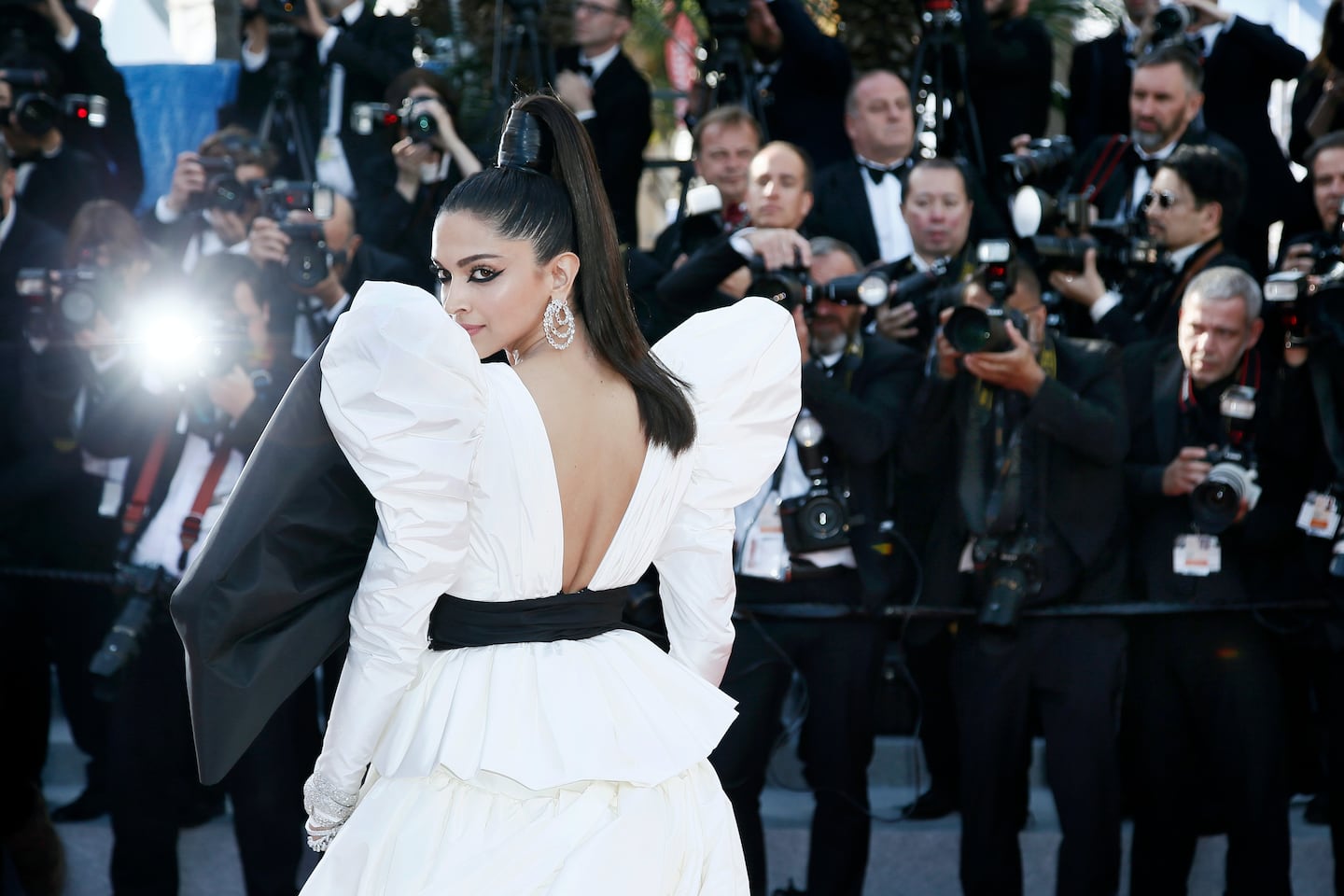
MUMBAI, India — "I've got it all, Jimmy Choo and Manolo, Prada, Galliano. Can't get enough. I want more and more... Louis Vuitton and Stella McCartney, Donatella Versace. I use a bag from Gucci."
The lyrics from the song featured in the 2012 Bollywood film “Student of The Year” certainly aren’t subtle but they say a lot about the appetite for luxury in the Indian market.
The coming of age romantic comedy was chock full of luxury fashion brands: its female lead Shanaya, played by Alia Bhatt, carried a Hermès Birkin as her go-to accessory. Its sequel —released in May — styled its principal characters in Off-White and A Bathing Ape.
"The synergy of cinema and luxury brands really works in India," says Manish Malhotra, a veteran designer in his own right and the costume director of both hits.
ADVERTISEMENT
It is India’s film industry — not Hollywood’s — that is the largest in the world. According to Deloitte, it produces 2,000 films a year in 20 different languages and was valued at 14,684 crore rupees ($2.3 billion) in 2017. Going forward, the industry is forecasted to reach 20,060 crore rupees ($3.1 billion) by 2022.
As India’s film industry grows, so too does the opportunity it presents to global fashion brands in terms of product placement, red carpet dressing and collaborating with costume designers. Yet global fashion brands — to their detriment — are still missing out.
Limited Access Stifles Potential
The maturation of India’s film industry has been remarkable in recent years. Just ask Indian designer Rocky S (real name Rakesh Singhvi), who has worked on over 200 films since his career began in the 1990s.
“When I first started out as a costume designer, it was normal for the director ask to make an ensemble overnight,” he recalls. “There was little planning and no real budget, and often I would have to haggle over payment after the shooting was finished.”
Today, Bollywood productions allocate a dedicated budget for costumes, creating an opportunity for global luxury brands to show their wares in India’s fast-growing market. According to Kotak Mahindra Bank, India’s luxury sector will hit $30 billion this year, up from $23.8 billion in 2017-2018.
But in spite of Bollywood’s potential as a marketing vehicle for fashion, it can still be difficult for film stylists to access top-tier brands.
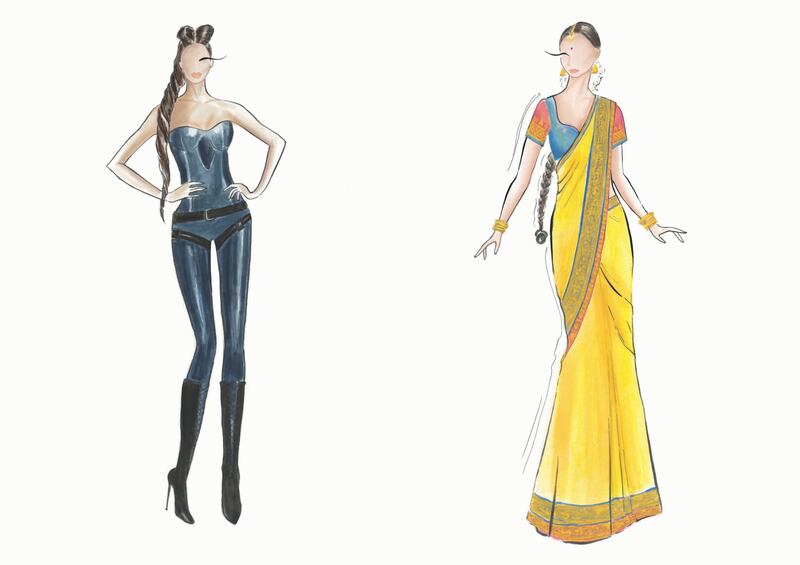
Kangana Ranaut's look from "Krrish 3," and Alia Bhatt's costume from "2 States" by Aparna Ram | Source: Roli Books' "100 Iconic Bollywood Costumes."
ADVERTISEMENT
“Access is hard,” says Rhea Kapoor, film producer and daughter of Indian screen icon Anil Kapoor.
“Say I have a character, a girl from a plush South Delhi locality, and I believe she would wear a jacket [from a leading luxury brand.] It is near impossible for me to get in touch with them,” she explains.
Kapoor thinks that luxury brands need to work more closely with their Indian offices, and reserve more press samples for the market while empowering their local public relations teams to make bold decisions.
In Kapoor’s experience, the whole process — beginning with an Indian film producer reaching out to a global brand — just takes too long. She reckons it is easier to work with brands that have local partners or representatives in India, rather than those who work remotely from Europe or America.
One example is Tumi, which took up product placement in "Veere Di Wedding." The suitcase maker is partnered with Reliance Brands, which boasts a portfolio of over 50 brand partners including Jimmy Choo, Bottega Veneta and Coach.
But more generally, there is a disconnect between India's top costume designers and international luxury brands. By not recognising film stylists as valuable brokers, some brands are missing out on potentially lucrative opportunities presented by Indian cinema. Vogue India's Fashion Director Anaita Shroff Adajania says that she probably has it easier than some of her film peers who haven't worked in editorial and with celebrities for years like she has.
Room for Collaboration
Clearly, brands need help navigating the thousands of new releases each year to find a good fit. Indian fashion industry leaders suggest that brands look to Hollywood for some inspiration for ways to invest and collaborate.
ADVERTISEMENT
Take Omega's million-dollar deals with the James Bond franchise, or Baz Luhrmann's "The Great Gatsby," for which Miuccia Prada adapted 40 designs from the Prada and Miu Miu archives alongside costume designer Catherine Martin.
Even in Quentin Tarantino’s newly released “Once Upon a Time ... in Hollywood,” Levi’s worked closely with the film’s costume designer Arianne Phillips, and the link has already garnered much media attention.
Locals in Mumbai say there are similar opportunities in Bollywood, but that most international brands don’t have their radars switched on when it comes to the Indian film industry. Bollywood films won’t have the same global impact but they do have a massive impact in a market which is now a priority for most brands.
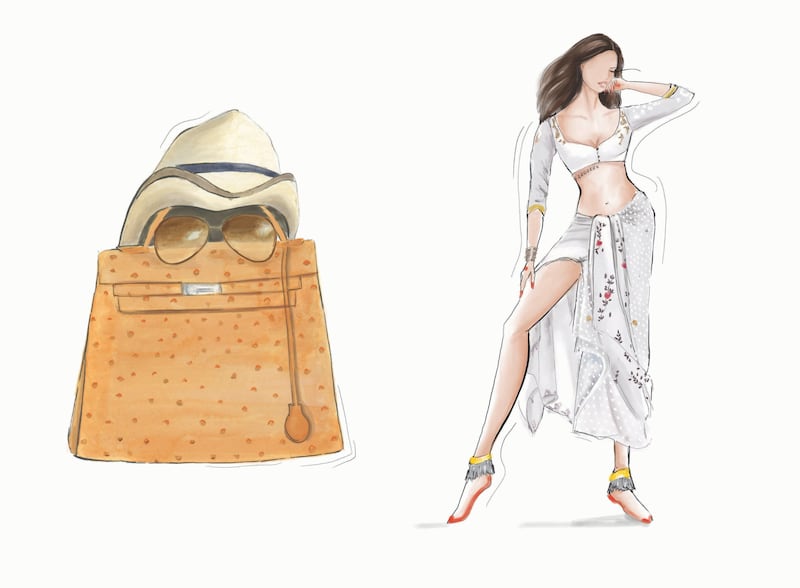
'Bagwati' and Priyanka Chopra's costume from "Golyon Ki Rasleela Ram-Leela" by Aparna Ram | Source: Roli Books' "100 Iconic Bollywood Costumes."
“With the right production house, storyline, onscreen and off-screen talent, [it] would possibly provide the greatest penetration and most effective branding and brand visibility for luxury brands in not only India, but also South Asia and the Middle East region,” says Reliance Brands’ Senior Vice President of Public Relations and Marketing, Deepika Gehani.
Arjun Bhasin, for example, has been credited with bringing a new cool to Indian cinema. Having worked with Hollywood stars Julianne Moore and Michelle Williams, the stylist and former fashion director of GQ India is selective when it comes to taking up Bollywood projects.
In the 2011 film “Zindagi Na Milegi Dobara,” Bhasin personified an Hermès ostrich-leather Kelly bag into its own character. In the movie, one of the main male leads buys an orange Hermès Kelly bag for his fiancé, at her insistence.
The bag is then transformed into a “person” in the film, complete with a hat and sunglasses and given a name — “Bagwati” (Wati being the Hindi suffix for a woman, therefore translating into “Bag Lady”). The cameo spoke volumes on how the influx of foreign labels into India had affected the higher echelons of society.
Cashing in on Star Power
According to several film industry leaders, luxury brands are simply not trying hard enough to reach out to Bollywood stylists, bar a few who also work in Western markets
That is not to say that international brands are immune to Bollywood's charms. High street brand Vero Moda has had both actress Kangana Ranaut and film director Karan Johar design capsule collections for them, while up and comer Sara Ali Khan has recently signed a two-year contract with Puma to become the face of the brand. Meanwhile, newcomer Janhvi Kapoor represents Benetton Perfumes, and Christian Louboutin — a known Bollywood fan — named a pair of his trademark red soled shoes after actress Deepika Padukone.
However, such examples are not common enough, suggests Bhasin. “Most stars in the West are connected with or endorse luxury brands, which is not the case in India yet,” he says.
When it comes to red carpet dressing, luxury brands have been more proactive — at least when the event is in the West. For the most recent edition of the Cannes International Film Festival at least eight actors from India walked the red carpet, and all were dressed in international labels ranging from Fendi to Valentino.
Most stars in the West are connected with or endorse luxury brands, which is not the case in India yet.
Peter Dundas custom made a black and white ball gown for Deepika Padukone whilst Ralph and Russo designed a bespoke white tuxedo with a train for Sonam Kapoor Ahuja.
It is easy to see why designers go to such effort. Many of Bollywood's established names have impressive follower numbers on social media that can translate to marketing gold. Priyanka Chopra Jonas is leading the pack with 43.7 million and Deepika Padukone with 38 million, outnumbering American stars like Natalie Portman, Blake Lively and Reese Witherspoon.
Last December at Jodhpur's Umaid Bhavan Palace, Chopra married Nick Jonas in a bespoke Ralph Lauren chantilly lace gown featuring 32,000 pearlescent sequins, 11,632 Swarovski crystals and a sweeping 75 feet veil.
It was the first time the designer has ever designed a wedding dress for an Indian celebrity, and paved the way for Ralph Lauren’s India launch. The label opened its first store in Delhi this February, attended by none other than Chopra Jonas.
However, “considering how many more people in India watch movies than look at pictures of the stars on the red carpet in magazines I’m surprised the luxury brands have not taken more of an interest in film as a medium,” says Bhasin.
Kapoor agrees. “I know customs in India is a [logistical] issue [for samples], but [brands also] do not know who the right people in the industry are to reach out to when it comes to films,” she claims. Though she concedes, that “if I needed a dress for a film project I would be holding on to it for two to three months, so perhaps that is one reason why they prefer red carpet dressing over films.”
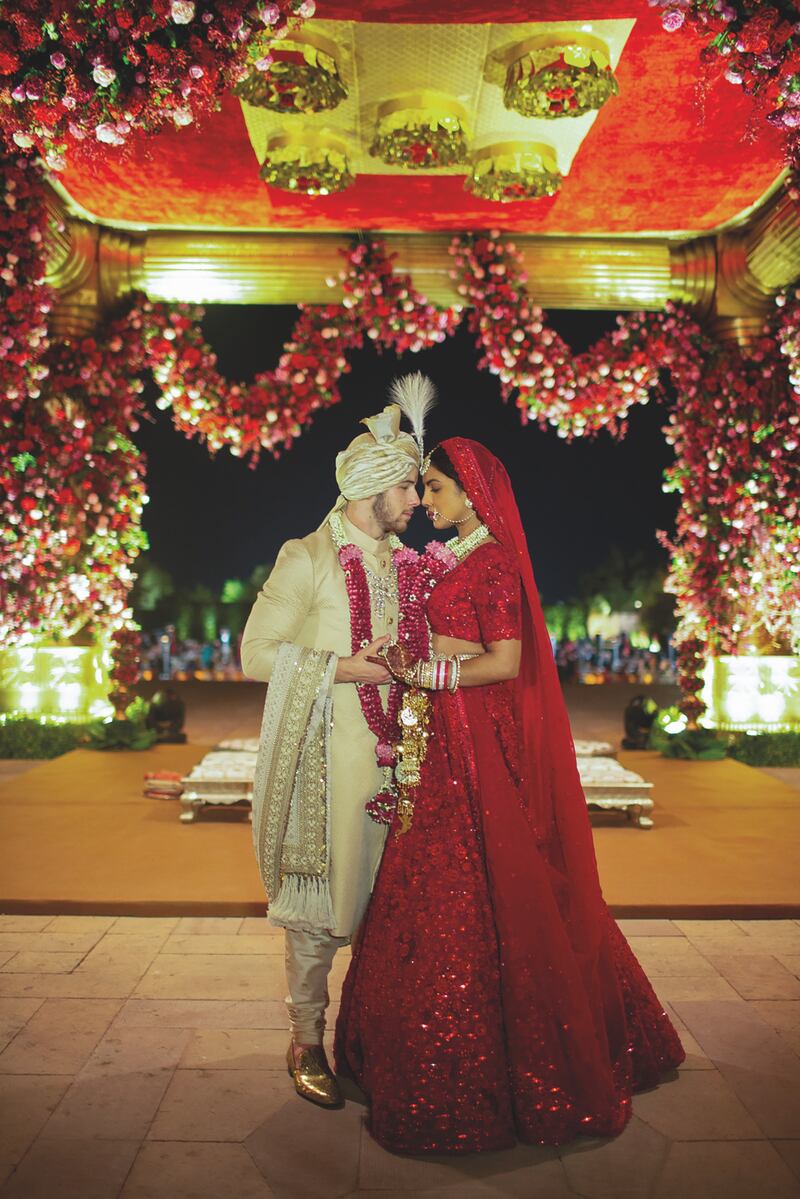
Priyanka Chopra and Nick Jonas wearing Sabysachi at their wedding at Umaid Bhawan Palace in Jodhpur, India | Source: Getty Images
“India unfortunately has not come into the international platform for any brand to take an Indian actress as a face apart from the one and only Aishwarya Rai Bachchan,” says Kalyani Saha Chawla, an industry expert and Christian Dior’s former vice president of marketing and communications in India.
Indeed, in spite of Bollywood’s abundance of stars, global brands tend to play it very safe with names like Bachchan, Priyanka Chopra and Deepika Padukone who have an international profile.
Striking Deals with Studios and Moguls
Exceed Entertainment's Co-founder Afsar Zaidi believes that Indian designers and homegrown brands have been much better at understanding the ways to work with film than their international counterparts. He also cites the co-branded HRX- Kaabil fitness wear collection that actor Hritik Roshan struck with the film Kaabil in 2017 as an interesting business model for non-luxury players to watch.
One area Zaidi feels luxury brands should focus on is the promotional tour – before a major release, actors tour many cities in India and even internationally with Dubai and London often included.
“The problem is that Indian movies are [thought] to be typical Bollywood song and dance, and the ones that make it to international recognition à la Slumdog Millionaire have little to offer in terms of luxury associations,” says Saha Chawla.
Indeed, some fashion and luxury brand executives seem to be under the impression that they are limited to over the top aesthetics, when in fact Indian cinema is one of the most diverse in the world. It is evolving fast, even if its reputation in the West is stuck in the past.
This year alone the range includes “Gully Boy” a film that looked at hip hop culture in Mumbai, which made its world premiere at The Berlin International Film Festival in February. The year ends with the release of Brahmastra, a superhero fantasy drama. Indian film producer Guneet Monga, who has also produced many off-beat films in Bollywood, this year was awarded an Oscar for her documentary “Period. End of Sentence.”
Indian cinema is evolving fast, even if its reputation in the West is stuck in the past.
The diversity of genre is equalled with the diversity of language and hubs. Many global brand executives would be surprised to learn that Hindi language cinema, known as Bollywood, is just one of many industries within an industry.
Although Bollywood receives the most focus, there is also Pollywood (the Punjabi language film Industry), Tollywood (which can refer to the Bengali language industry based in Kolkata or the Chennai headquartered Tamil film industry), Sandalwood (the Bengaluru based Kannada language film industry) and more.
Fighting for Respect
How global fashion has – and hasn’t – collaborated with Indian cinema in the past provides valuable lessons for the future.
Though brands may find the size and complexity of the film industry intimidating, it was ultimately a film, “Kabhi Alvida Naa Kehna,” that struck a chord with global-minded Indian audiences and buoyed demand for global brands when it was released in 2006.
The timing was perfect: Louis Vuitton had arrived in India the year prior, and Christian Dior had just set up its first store in Delhi. India’s highest-paid actor of the decade, Shah Rukh Khan, had a leading role in the film, and was an ambassador for LVMH-owned Tag Heuer.
I had to fight for everything from sample racks to shoot budgets.
“Shah Rukh did much more for the watch brand than was in his contract,” recalls Saha Chawla, who was Dior India’s vice president of marketing and communications at the time. “The film’s director Karan Johar set the trend for urban India the way nobody had before or after. His mass appeal may be intact, but his audience includes the elite who are purveyors of luxury,” she adds.
Though India was – at the time – an emerging market promised to become the next China, Saha Chawla recalls it wasn’t easy to convince European colleagues of Bollywood’s importance. “I had to fight for everything from sample racks to shoot budgets,” she says.
But considering that film stars like Shah Rukh Khan are paid about four crore rupees (which is around $600,000) a year per deal, films can provide luxury brands a more cost-effective inroad to potential ambassadors.
“I was lucky that Paris trusted me, and in return [Dior] became number one [in the LVMH’s internal marketing ranking within India], end of year one beating Louis Vuitton…I have only Bollywood to thank for that,” says Chawla.
“[Since then] I engaged films into every move I made.”
After its Bollywood debut, Dior went on to work with a few carefully selected films, one of which was “Aisha,” based on Jane Austen’s Emma. It marked the debut of film producer Rhea Kapoor — and starred her sister Sonam — both women were already considered fashion icons.
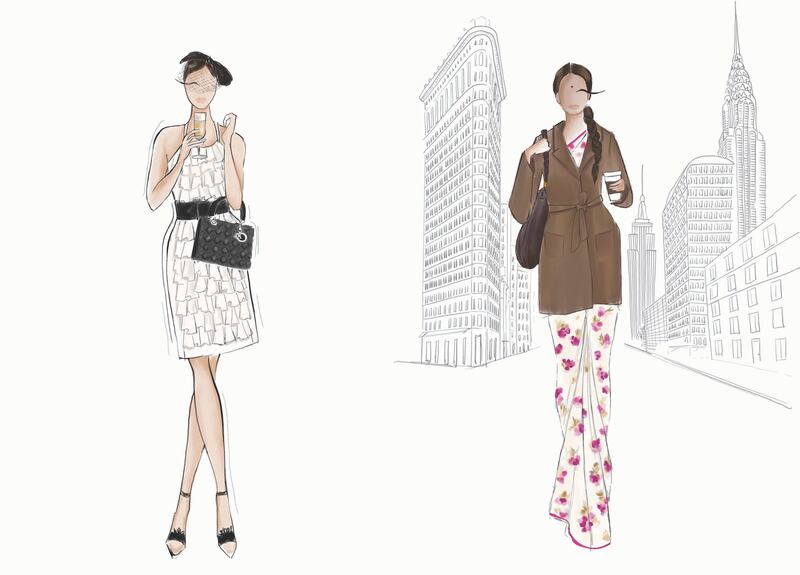
Sonam Kapoor's look from "Aisha," and Sridevi's look from "English Vinglish" by Aparna Ram | Source: Roli Books' "100 Iconic Bollywood Costumes."
“This Bollywood film was quite a historical moment as far as luxury brand associations go,” says Saha Chawla. Indeed, it was considered an exercise in synergy between production and marketing: one scene was shot at the Dior boutique in Delhi, and press interviews for the film were also conducted at the store.
The film elevated the Lady Dior bag to cult status, and the item was sold out across the country. “A girl that can go to a luxury mall and think about buying a Dior bag is probably familiar with Sonam Kapoor [Ahuja],” explains Rhea Kapoor, who went on to co-produce and work on costume designs (alongside leading fashion duo Abu Jani and Sandeep Khosla) for the 2018 film “Veere Di Wedding,” in which fashion was so prominent it inspired comparisons to “Sex and the City.”
While many brand-film collaborations followed, not many luxury players were actively involved. Similarly, film stylists continue to struggle to build wardrobes for top acting talent.
“Most times a Hollywood star or even a Chinese star would get priority over an Indian A-lister,” says Saha Chawla.
Such is the case, “even [if] there is no better way to attract and be visible to a global Indian audience than being part of the movie industry in India.”
If luxury executives want to get more bang for their buck in India, the first step they should make seems rather clear. As one insider suggests, it’s about time they head to the movies and expand their marketing repertoire to convert more of India’s upwardly mobile millions into consumers.
Sujata Assomull is the author of “100 Iconic Bollywood Costumes,” published by Roli Books.
Related Articles:
[ Dismantling India’s Patriarchy: Sonam K Ahuja and Karla BookmanOpens in new window ]
[ Cashing In on Asia’s Red Carpet EconomyOpens in new window ]
The Swiss watch sector’s slide appears to be more pronounced than the wider luxury slowdown, but industry insiders and analysts urge perspective.
The LVMH-linked firm is betting its $545 million stake in the Italian shoemaker will yield the double-digit returns private equity typically seeks.
The Coach owner’s results will provide another opportunity to stick up for its acquisition of rival Capri. And the Met Gala will do its best to ignore the TikTok ban and labour strife at Conde Nast.
The former CFDA president sat down with BoF founder and editor-in-chief Imran Amed to discuss his remarkable life and career and how big business has changed the fashion industry.